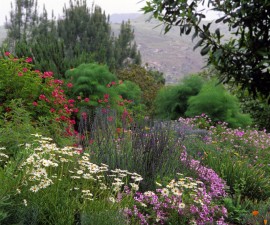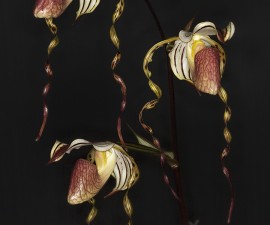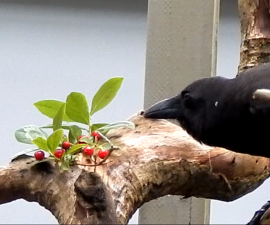Save the Earth! It’s the only planet with chocolate.
BY Karyl Carmignani
With its heady scent, earthy color palette, lush, melting texture, and indescribable flavor, it’s no wonder people around the world embrace chocolate. But how do we get from pod to pleasure? The process from shade-loving tree to foil-trussed bar is a fascinating, labor-intensive journey with a lexicon all its own.
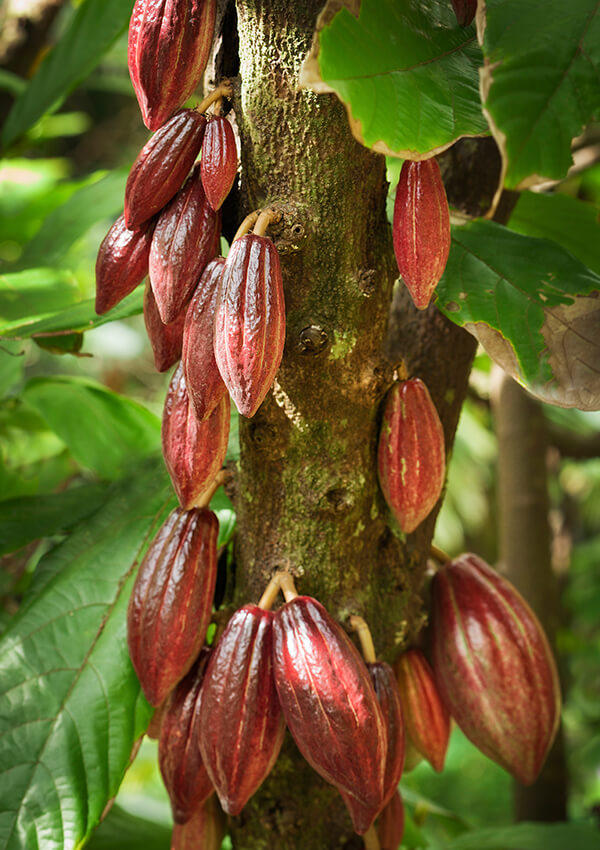
SHADE GROWN
Cacao trees are delicate, shade-loving plants that thrive in the tropics.
All varieties of chocolate rely on a key ingredient: cacao seeds pried from a pulpy pod growing on a fragile tree. The cacao (pronounced kah-KOW) tree most likely originated in the Amazon, sheltered beneath the forest canopy, straddling 20 degrees north and south of the equator—75 percent of cacao is found within 8 degrees of this equatorial belt. Requiring a strict diet of rain, shade, humidity, and nitrogen-rich soil, cacao trees also flourish in West Africa, South and Central America, and Southeast Asia and Oceania.
Wherever it’s grown, debate follows the botany of the cacao pod: some say it’s a fruit, others say a berry. The bottom line is that chocolate comes from a fruit tree but it’s made from the seeds, which are also called beans. And our affection for this confection is still going strong.
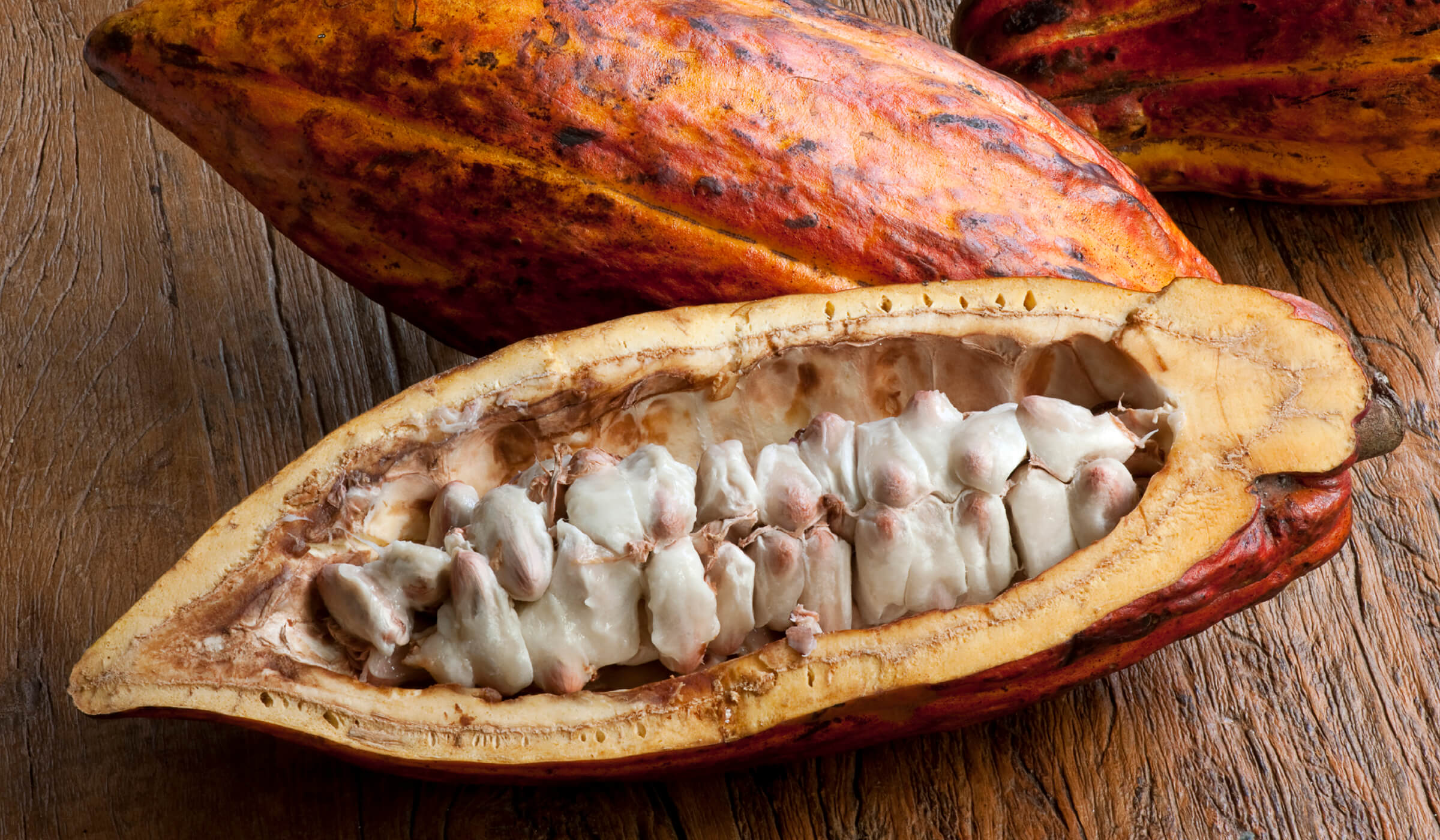
The Magical Fruit
Showy and delicate, the cacao tree Theobroma cacao (meaning “food of the gods”) can live up to 100 years, but most trees only provide marketable cacao beans for the first 25 years. The tree has large, glossy leaves about the size of an adult’s outstretched hand. Young leaves are red in color, maturing to green. The latter can move horizontally and vertically 90 degrees to catch sunlight and protect young leaves from the elements. The cacao tree has pink or white blossoms, which are pollinated by a gnat-like insect called a midge. This tiny creature resides in the moist leaf litter on the forest floor, mere wing beats away from the flowers it pollinates.
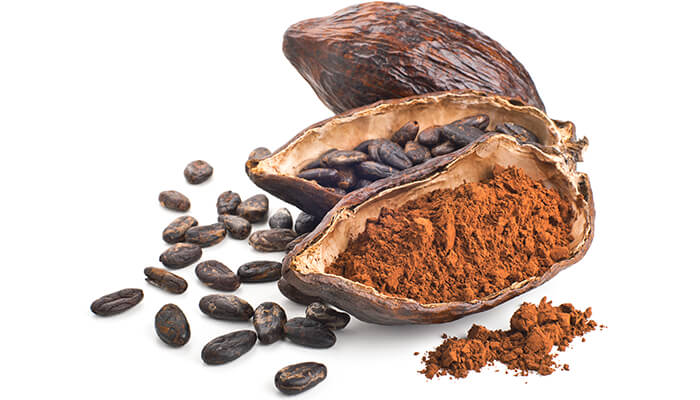
Pollinated flowers give way to football-shaped pods, 8 to 14 inches long, which grow directly from the tree’s main branches and trunk. Twice a year, farmers harvest ripe cacao pods by hand, slicing them carefully from the tree using a machete. It takes 7 to 14 pods to produce one pound of dry cacao beans. Monkeys, birds, and rodents also covet cacao and use teeth, bills, and claws to break into the pods to eat the rich, sweet pulp. But the almond-sized cacao beans (seeds) are bitter, so animals spit them out and they sprout and grow, renewing the forest understory.
Harvesting cacao pods is just the first step. Farmers then split the pods—a well-practiced worker can crack 500 pods per hour—and pile the pulpy cacao seeds in baskets or under banana leaves to dry and ferment. In about a week, the purplish seeds turn a rich, dark brown. Each pod contains 30 to 50 seeds, enough to make 7 chocolate bars. Once dried, the precious cacao seeds are shipped to brokers, markets, and factories in burlap bags weighing up to 200 pounds each.
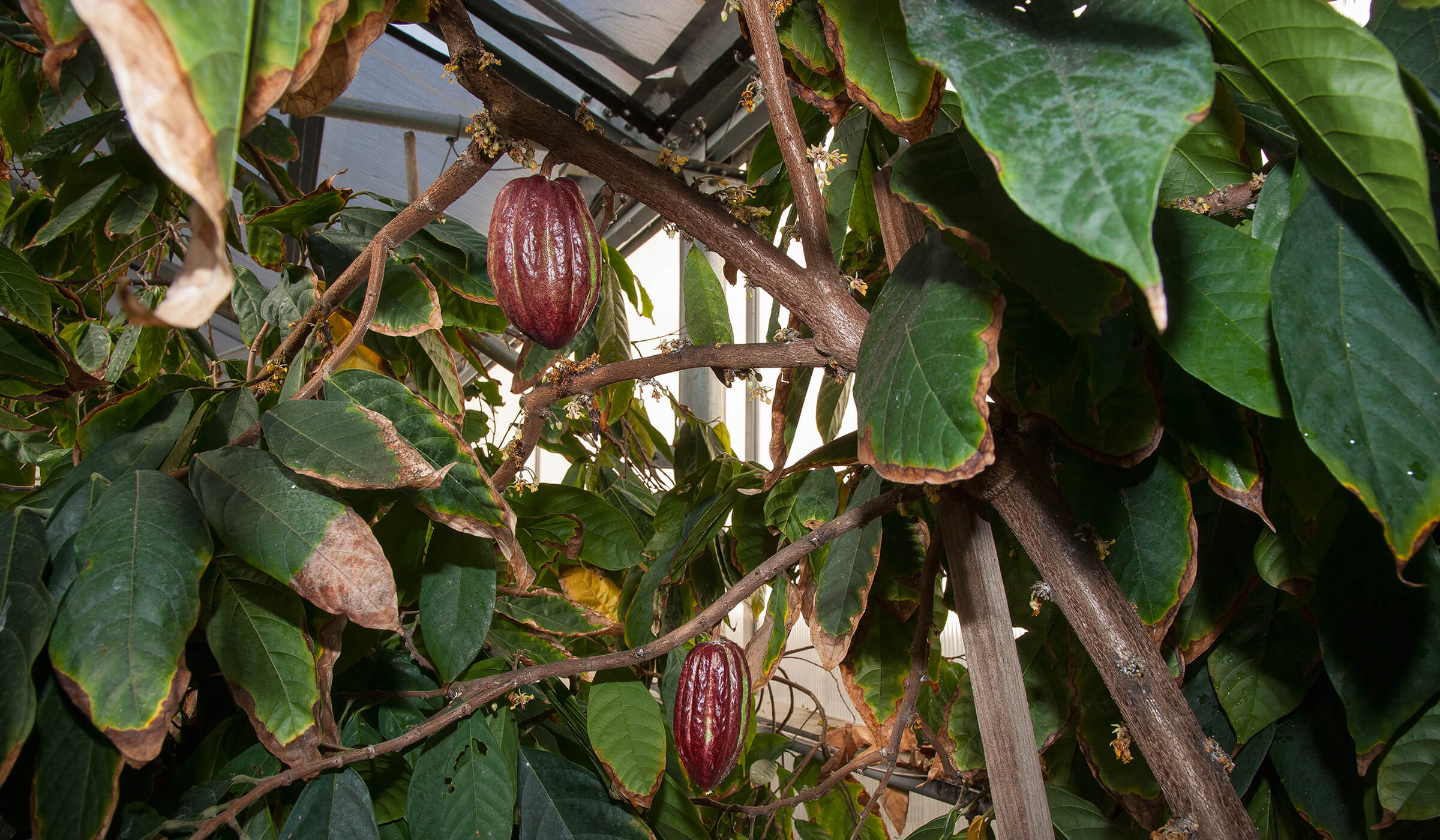
The Dark Side
There’s some confusion surrounding the terms cacao and cocoa, which are often used interchangeably with no great harm. However, the U.S. Food and Drug Administration defines cacao as “the bean which is the source” of chocolate products such as cocoa powder, chocolate liquor, or cocoa butter, depending on how the cacao bean is processed. So your hot cocoa comes from the cacao tree!
Chocolate comes in three main varieties: dark, milk, and white. The proportion of cacao solids contributes to its coloration. White chocolate contains cocoa butter, but no chocolate liquor, leaving it pale and smooth. Dark and milk chocolates are made using the same arduous process, with milk added to the mix for the lighter of the two. It took Swiss chocolatier Daniel Peter eight years of experimenting before he discovered an effective way to add milk to chocolate without watering it down. Henri Nestlé had developed a condensed milk for babies, which proved the perfect sweetening agent for cacao, and their partnership led to milk chocolate. By the 1880s, milk chocolate was available in solid form. It remains the most popular kind of chocolate.
Dark chocolate, also called “black chocolate,” comes in different ranges of flavor, based on the percentage of cacao. European guidelines specify a minimum of 35 percent cacao solids to earn dark chocolate status, while the U.S. has no official definition of dark chocolate. This dark delicacy gained in popularity when scientific reports stated an array of health benefits from eating it, like lowered blood pressure and improved cardiovascular performance, cognitive function, and even mood.
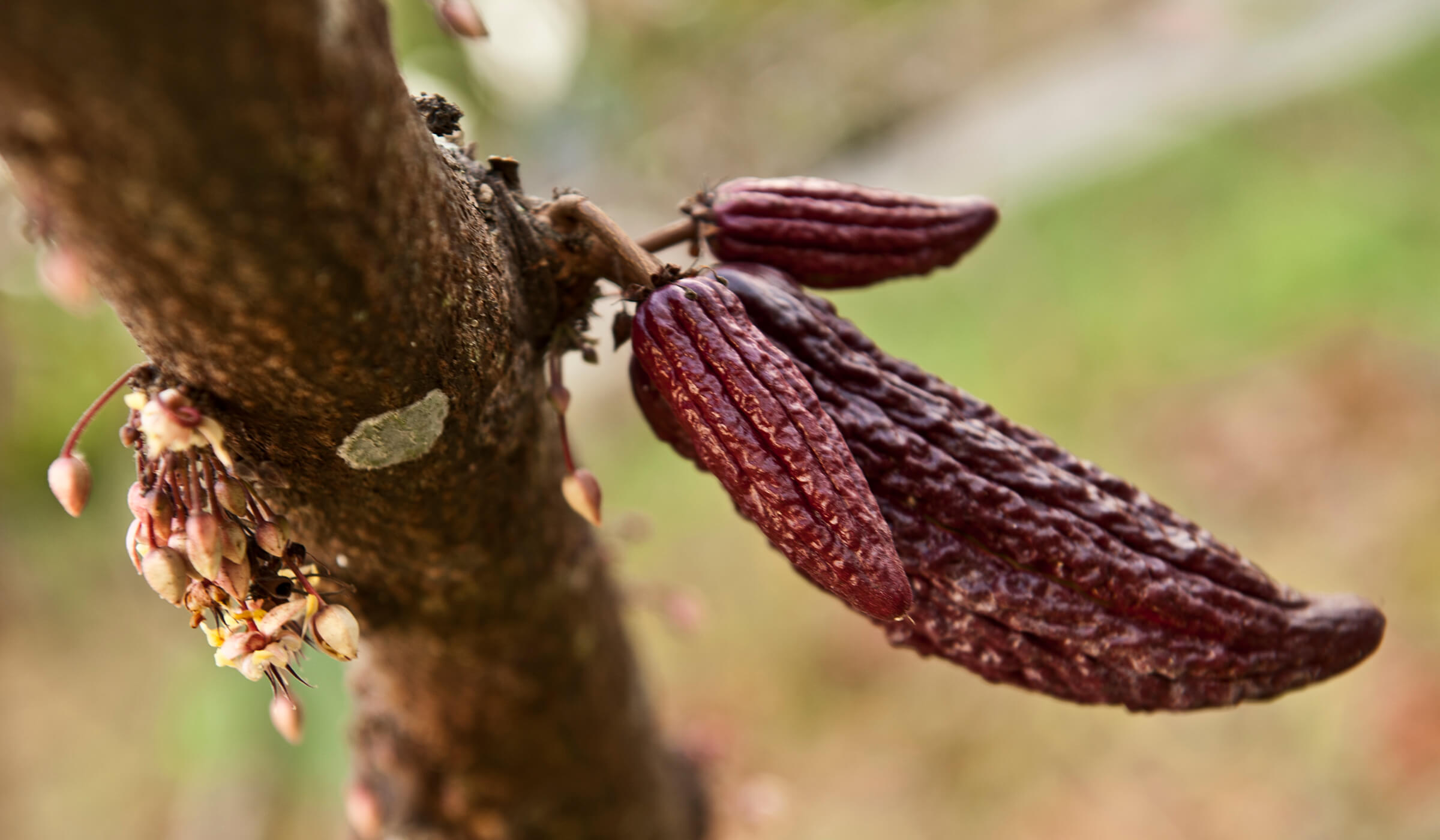
Dripping with History
From explorer Christopher Columbus, who brought the first cacao beans to Europe in the early 1500s, to British chocolatier John Cadbury, who unleashed the first box of Valentine’s Day chocolates in the 1860s, there were—and are—many players coaxing chocolate out of the forest and onto our tongues. Long before chocolate was used to drizzle and dip on the dessert table, the upper echelon of Mayan and Aztec culture enjoyed chocolate as a frothy, warm beverage. The sacred drink called chocolatl was drunk from special golden cups. As a drink fit for royalty, priests, and decorated warriors, the bean from which it was made became a valuable item to trade around the globe. It was so valuable, it was even used as currency in Mesoamerica!
By the 1600s, chocolate met sugar in Europe, and a new status-grabbing beverage was born. But the French remained skeptical, calling it a “barbarous product and noxious drug.” It took a Spanish princess who married into the French court to transform drinking chocolate into a favorite pastime in France. Many households invested in chocolate pots and cocoa sets; saucers were invented to keep chocolate off of fine clothes.
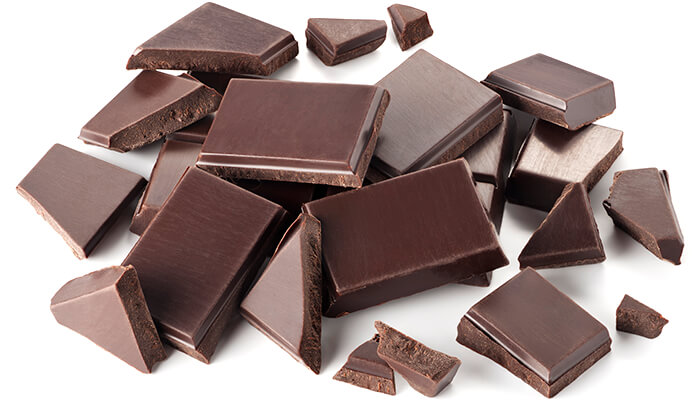
Chocolate houses were all the rage in England in the 15th and 16th centuries, when people gathered over steaming chocolate drinks to socialize, gamble, and discuss issues of the day. Some found this a worrisome trend, and Charles II of England tried to close all the chocolate houses, as he feared his enemies would plot against him over cocoa. But chocolate had found its way into the hearts and mouths of commoners and kings alike, and there was no going back.
These days, Europeans consume the most chocolate, with the average Swiss citizen enjoying 22 pounds per year, followed by Austrians who consume just over 20 pounds each year. People in the US put away about 11 pounds per year per person, according to the International Cocoa Organization. Although Africa produces 75 percent of the world’s cacao (Ivory Coast is now the top cacao-producing country), people there consume only 3 percent of the world’s chocolate. One study in the UK revealed 91 percent of women and 87 percent of men imbibe in the bean. Valentine’s Day week is a boon for candy sales, and the US snaps up 58 million pounds of chocolate. Perhaps true love does grow on trees after all.
(Photos by, from top): Ken Bohn/SDZG; YinYang/iStock/Getty Images; TinaFields/E+/Getty Images; AndreyGorulko/iStock/Getty Images; Ken Bohn/SDZG; xeni4a/iStock/Getty Images; NightandDayImages/E+/Getty Images


